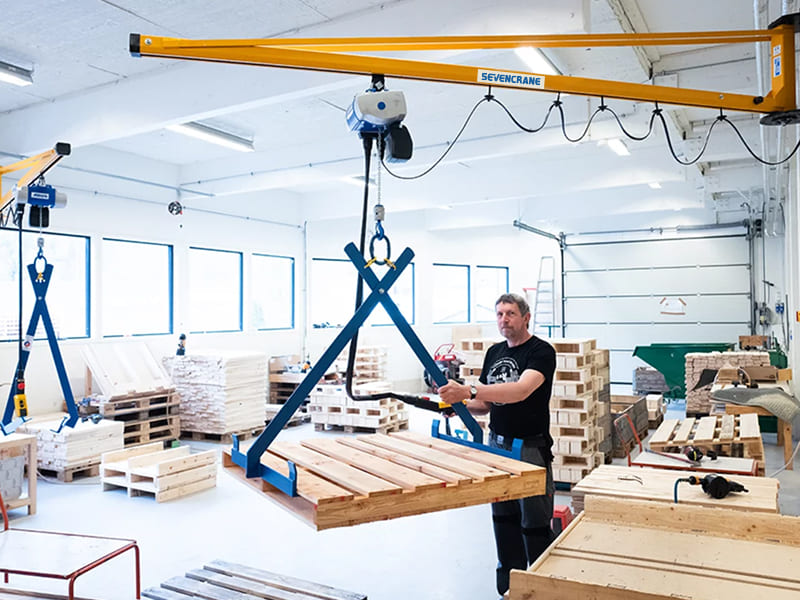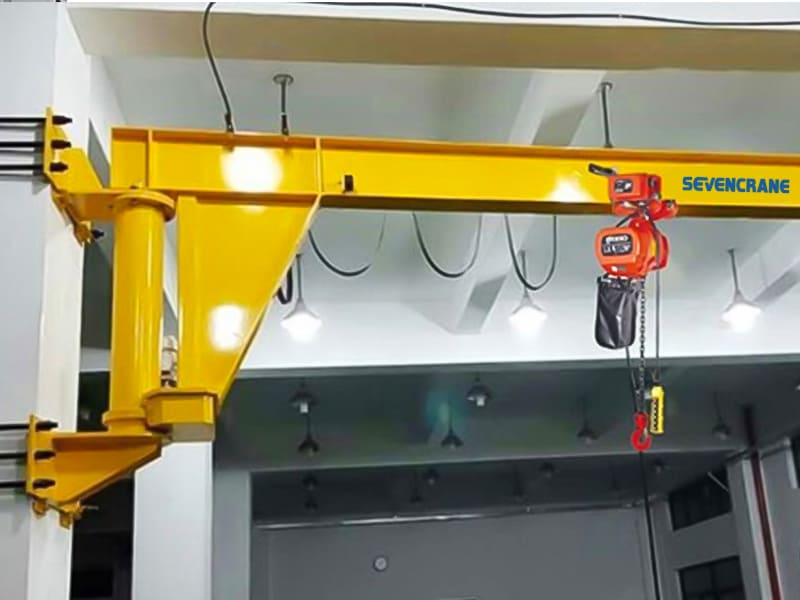Introduction
Wall-mounted jib cranes are valuable tools in various industrial settings, offering efficient material handling while saving floor space. However, their operation requires adherence to strict safety guidelines to prevent accidents and ensure smooth functionality. Here are key safety operating guidelines for wall-mounted jib cranes.
Pre-Operation Inspection
Before using the crane, perform a thorough visual inspection. Check the jib arm, hoist, trolley, and mounting bracket for any signs of wear, damage, or loose bolts. Ensure that the hoist cable or chain is in good condition without fraying or kinks. Verify that control buttons, emergency stops, and limit switches are functioning correctly.
Load Management
Never exceed the crane's rated load capacity. Overloading can cause mechanical failure and pose severe safety risks. Ensure the load is securely attached and balanced before lifting. Use appropriate slings, hooks, and lifting accessories, and confirm they are in good condition. Keep the load as low to the ground as possible during transit to minimize the risk of swinging and loss of control.
Safe Operation Practices
Operate the crane smoothly, avoiding sudden movements that can destabilize the load. Use slow and controlled motions when lifting, lowering, or rotating the jib arm. Always maintain a safe distance from the load and crane during operation. Ensure the area is clear of obstacles and personnel before moving the load. Communicate effectively with other workers, using hand signals or radios if necessary.


Emergency Procedures
Be familiar with the crane’s emergency procedures. Know how to activate the emergency stop and be prepared to use it if the crane malfunctions or if an unsafe condition arises. Ensure all operators and nearby personnel are trained in emergency response procedures, including how to safely evacuate the area and secure the crane.
Regular Maintenance
Adhere to a regular maintenance schedule as specified by the manufacturer. Regularly lubricate moving parts, check for wear and tear, and replace any damaged components. Keeping the crane well-maintained ensures its safe operation and extends its lifespan.
Training and Certification
Ensure all operators are properly trained and certified to operate the wall-mounted jib crane. Training should include understanding the crane’s controls, safety features, load handling techniques, and emergency procedures. Continuous training updates and refreshers help operators stay informed about best practices and safety regulations.
Conclusion
Following these safety operating guidelines for wall-mounted jib cranes minimizes risks and ensures a safe working environment. Proper operation not only protects personnel but also enhances the crane's performance and longevity.
Post time: Jul-18-2024









